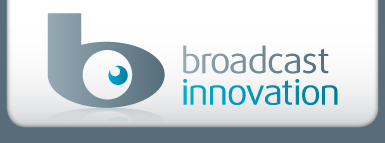Ready to eat or past its sell-by date: how fresh is your media?

Why availability is overtaking digitisation as a key industry challenge. Russell Grute of Broadcast Innovation investigates.
With the explosion of multiscreen media consumption we are now entering a bright future for broadcasters and content owners everywhere… If more viewers want to access more content than ever before, and with potential new business models to monetise it “imagineered” every day, how can we lose?
My own trans-media digital natives (I mean children) search and stream, share and shout about what they find on their small screens. As long as dad pays for the household broadband service then their recession-hit pocket money is uploaded via PayPal or iTunes and content is downloaded with a swipe of their touch screens. Like any industry driven by unpredictable mass consumption, consumers will find a way to get what they want at the price they want to pay.
Accordingly an all new media supply chain is evolving fast. To keep up, broadcasters need to be sure that their popular content and brand is readily accessible, enriched accordingly, fresh and ready to go.
By 2012 what’s the role of mam in this?
At April’s NAB 2012 over 400 vendors featured media management or workflow as part of their offer. Many jumping on the marketing bandwagon, a few giving real insight in to new ways to cost effectively visualise, search, broker and enrich both content and metadata for broadcast and beyond. Vidispine and IPV with Metadata Central caught my eye this year.
Put aside the accompanying complexities of acquisition and rights management. Perhaps effective media management can now be summarised as the optimal processes and actions required to assist programme making and content repackaging for existing and new markets. To determine the commercial validity (freshness) of content, mam processes now need to provide much more than media locations and scattered metadata.
From digitisation to transformation
As recently as 5 years ago digitisation was still a major challenge, considered the key enabler. “Ingest once” and we’d be ready for anything, or so we thought. Most content has now been digitised at least once and it is now piling up everywhere. Multiple copies exist at different stages in the workflow. With content registered in business systems, the mam(s), production, post and play out systems: where should we look for the right information? And what happens next when storage, servers and archives are full, whilst simultaneously new markets demand new formats? Re ingest again to a better format or transform it? In some ways broadcasters are now trapped by the assets they have in stock; too slow to keep our media supply chain moving.
Shane Warden General Manager at IMG Mediahouse, a unit of IMG worldwide, the global sports, fashion and media company believes we should much better define the “assets” themselves.
“As an organisation dedicated to managing other people’s media interests, we have very quickly realised that simple digitisation is not preservation or migration and unless great care is taken, content owners are potentially sitting on poor quality assets and metadata. As technologists we understand how easy it is to create a media file from a broadcast feed or tape, but I believe if we are responsible for helping our clients to commercially exploit their content, then we have a duty of care in execution.
At IMG this means that assets are migrated to a certified set of criteria which include a detailed history of the physical and signal quality of the tape at the time of migration. In doing so we create a record that accompanies any asset which will add context to an archive including scans of tape cassette labelling and any associated commercial and production paperwork. This is invaluable from a commercial point of view and allows us to provide provenance and assurance of the state of content throughout its lifecycle.
In addition to our migration criteria we also perform broadcast QC tests which present a profile of the asset relative to current broadcast requirements. However the fact that an asset was previously technically suitable for broadcast does not always mean it will pass muster now. Thus assets are registered in the MAM with associated additional metadata to readily verify their provenance and state at the time of migration with advisory information regarding modern day technical broadcast suitability.
When considering wider online distribution and new markets for our clients we are now planning to expand this approach to identify more attributes which affect the readiness of content for all markets. We are working to establish a media asset architecture that suits all of our value added processes and protects our clients’ interests.”
Unexpected item in the bagging area…
Creativity and content need to flow and one of the pitfalls of IT broadcast systems is that sometimes processes just stop. This is usually due to files, wrappers or metadata being received in an unexpected state by associated applications or systems. Establishing the correct levels of content validity in operations such as programme making, post production, operations and play out, keeps fresh content moving toward the audience.
An asset architecture based not a technology-up view but instead using a business-down perspective enables the best workflow with fewest hiccups. As well as providing good picture quality and enabling efficient content transformation for smaller screens and streaming, media assets now also have to allow easier location, inspection and enrichment throughout the content lifecycle. Planning systems in acquisitions, ad sales and scheduling for example need access to media and its attributes. In programme making and post production continuous logging, indexing and tagging provide rich metadata to share in the storytelling and creative cycles. Increasingly for second screen and companion devices this information adds additional depth and engagement for the viewer. In fact this type of data is the key to creating new audiences, as long at the content is ready to eat too.
The cost of the factory vs. the cost of production
Mam solutions are often seen as expensive, and this will always be true if we only consider the cost of the factory. With an optimal business-ready media asset architecture, enabling faster knowledge of content readiness for new audiences, we could more accurately calculate the unit cost of production. And then continuously drive it down using good creative and logistical processes alongside optimal technology utilisation. This is what happens in many other industries and this will allow broadcasters to keep the pace. By using mam more effectively to thrust fresh and relevant content toward today’s new audiences, who are using VOD, mobile and mostly OTT, at minimal technological cost.
Crucially, this allows broadcasters to focus on great programme making, creative storytelling and develop a compelling multiscreen presence. These are their real advantages to viewers and advertisers everywhere.
First published in TVB Europe



